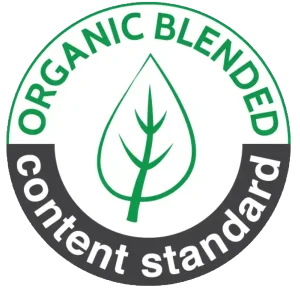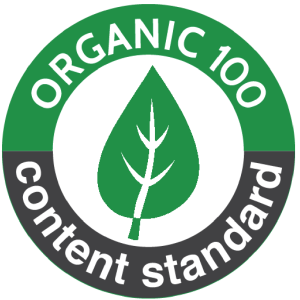Are you looking for the right fabric washing method for your denim or cotton products? In this article, we will provide a comprehensive Enzyme Wash Acid Wash Stone Wash comparison, covering everything from techniques to effects and practical applications, to help you choose the best method for your brand identity.
1. Why is it Necessary to Differentiate Wash Techniques Before Production?
Nội dung tóm tắt
ToggleA wash effect is more than just a fading process; it’s an element that defines the product’s “personality.” From a simple pair of jeans, a different wash technique can create three completely distinct styles: natural casual, vintage worn-out, and rebellious edgy.
Understanding the wash techniques before production helps you:
- Reduce the risk of faulty washing that leads to damaged goods
- Ensure a consistent brand image
- Optimize costs and time in mass production
2. Overview of 3 Popular Wash Techniques: Enzyme, Acid, and Stone

When it comes to fabric washing techniques in the fashion industry, especially for denim, the three most popular and widely applied methods today are: enzyme wash, acid wash, and stone wash. Each technique offers a unique aesthetic, has different physical or biological effects on the fabric, and is suitable for specific design directions and product lines.
2.1. What is Enzyme Wash?
Enzyme wash uses biological enzymes (usually cellulase) to break down surface fibers, softening the fabric and creating a light, natural faded effect. It aligns with the sustainable fashion trend and is widely applied to cotton, linen, tencel, and bamboo.
✅ Advantages: Softens the fabric, maintains shape well, and causes minimal damage to fibers.
⚠️ Note: Requires careful control of pH and temperature to avoid slight shrinkage.
2.2. What is Stone Wash?
Stone wash uses pumice stones to abrade the fabric, creating a strong faded effect and a naturally distressed look. It is suitable for denim, heavy fabrics, and vintage or retro products.
✅ Advantages: Creates a distinct classic effect that is difficult to replicate.
⚠️ Note: Can cause fiber wear if the tumbling time is too long or the stones are too large.
2.3. What is Acid Wash?
Acid wash uses chemicals (usually chlorine) combined with an abrasive material to create high-contrast, streaky faded patches. It is suitable for streetwear fashion and limited edition products.
✅ Advantages: Creates a strong, eye-catching, and unique visual identity.
⚠️ Note: Not environmentally friendly if wastewater is not treated properly.
3. When to Choose Which Technique?

Each wash technique has its own advantages. Therefore, a comprehensive Enzyme Wash Acid Wash Stone Wash comparison must be based on technical factors, aesthetic goals, and the type of fabric used.
3.1. Enzyme Wash
Do you need a product with a soft, gentle feel and a wash that doesn’t cause deformation? Choose Enzyme Wash. Suitable for: cotton shirts, linen dresses, premium sleepwear, resort wear. Especially suitable for brands that pursue green trends and products where the wash should not break the fabric’s structure.
Read more: What is Enzyme Wash and how VieTextile implements it effectively
3.2. Stone Wash
If you are making a vintage denim line and want a “worn-out,” “slightly rebellious” feel, Stone Wash is the optimal choice. Suitable for: ripped jeans, classic denim jackets, military-style canvas bags. Should be done by a skilled factory that can control the abrasion level, stone type, and tumbling time.
Reference VieTextile’s standard showroom denim wash technique
3.3. Acid Wash
Do you want a product with a “visually shocking” effect? Acid Wash provides a clear, highly personal streaky effect. Suitable for: oversized t-shirts, dark jeans, punk/streetwear styles. Should not be used on thin or light-colored fabrics.
See more guidelines on how to wash t-shirts correctly
4. Direct Comparison: Enzyme – Acid – Stone Wash from a Technical and Application Perspective

To choose the right wash technique, designers and production managers need to compare the methods on multiple aspects: from aesthetic effects, impact on the fabric, ability to control batches, to environmental friendliness. Below is an in-depth Enzyme Wash Acid Wash Stone Wash comparison.
| Aspect | Enzyme Wash | Acid Wash | Stone Wash |
| Aesthetic Effect | Soft, subtle fade | Strong, high-contrast streaks | Worn-out, classic, unique depth |
| Fabric Impact | Gentle, no fiber weakening if controlled | Can weaken fibers if poorly controlled | Moderate wear, depends on stone and time |
| Environmental Friendliness | Very eco-friendly, uses bio-enzymes | Low, uses strong chemicals; requires wastewater treatment | Neutral, requires stone sludge and wastewater treatment |
| Batch Control | Easy to control and replicate | Difficult to achieve uniformity | Varies, highly dependent on technician’s skill |
| Suitable Fabrics | Cotton, linen, tencel, modal | Dark, thick denim | Denim, heavy canvas |
5. So, Which Technique Should You Choose for Your Product?
5.1. For Local Brands:
- For a soft, durable feel: Enzyme Wash
- For a streetwear, rebellious style: Acid Wash
- For a vintage, retro, unisex look: Stone Wash
5.2. For Export Products:
- Requiring environmental certification: Prioritize Enzyme or Ozone Wash
- Washing on linen, tencel, or spandex-blend cotton: Use Enzyme Wash
See how VieTextile processes linen fabric here
6. Technical Notes for Implementation
- Always test samples before production.
- Consult the wash factory’s parameters: temperature, pH, drum rotation time.
- Monitor shrinkage and colorfastness after washing.
- Check input chemicals: origin and certifications.
7. The Role of the Wash Factory in Product Quality
No matter which technique you choose, the determining factor is the skill and process of the wash factory. VieTextile currently offers:
- The ability to perform all 3 techniques on various types of fabric
- Providing real photos and videos of the wash effect
- Free sample testing and saving a custom wash formula for each customer
Learn more about VieTextile’s wash factory in Ho Chi Minh City
8. Conclusion & Strong CTA
Every wash technique has its own identity. The choice should not be based on short-term trends but should consider stability, fabric durability, environmental requirements, and brand image.
Do you need consultation on the right wash technique for your product line?
Let VieTextile assist with free sample testing—providing real photos—and offering the optimal solution for each fabric type and brand identity.
Submit a free sample request at: https://vietextile.com/lien-he/
Technical consultation hotline: 0901 809 309
Reference ZDHC wastewater treatment standards at: https://www.roadmaptozero.com/
See more eco-friendly wash technology at Bluesign: https://www.bluesign.com/










